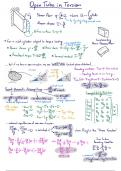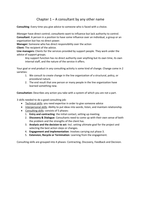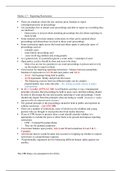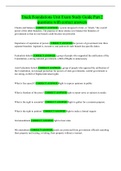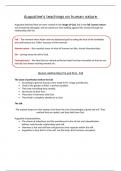- Prop.table (tabelnaam)
Frequency in precentages
- Hist(x, xlim=c(0,1000), breaks=1000)
Histogram plotten met waardes tussen de 0 en 1000 op de x is en …
Tabel sorteren
- Tb_room <- table (x)
Tabel wordt een object en dus opgeslagen (bijvoorbeeld nodig voor prop.table)
- Sort( x, decreasing = TRUE)
Tabel sorteren van hoog naar laag
- Sort( x) of Sort (x, decreasing=False)
Tabel sorteren van laag naar hoog
- Arrange (x, desc(price))
Tabel sorteren op basis van 1 aspect van hoog naar laag
Samenvattende statistieken
- Mean (x)
Gemiddelde
- Sd (x)
Berekenen van de standaard deviatie
- Median (x)
Middelste prijs
- Summary (x)
Geeft de minimale, maximale, median en mean
- Round(mean(x) ,0)
Mean afronden met 0 decimalen
- Head(x)
Geeft de bovenste waarde (let op niet de hoogste)
- Aggregate( price ~ room_type, data=listings, FUN=mean)
Mean prijs van elke kamer type waarbij ( ~ is by, “listings” is naam van database)
, Week 3
- Read_excel (“x, sheet = 1)
Openen van een database
- Nb_word <-
function(lexicon,corpus)(rowSums(sapply(lexiconmfunction(x)grepl(x,corpus)
De formule die er wordt gebruikt voor lexicon
- Sentences <- c(“x”,”y”…)
Corpus of tekst sentences potentially including words form the lexicon
- Hist(databse$number_human_words)
Historgram maken
Dataframe maken
- Aggregate( price ~ room_type, data=listings, FUN=mean
De gemiddelde uitrekenen voor elke aparte kamertype
-
- Results <- Aggregate( price ~ room_type, data=listings, FUN=mean) results
De nummers en dus resultaten vastellen in de database voor het maken van dataframe
- Se_values_neg <- aggregate(number_negative_words ~ company, databse,
FUN=std.error)
Se values uitrekenen
- Result_negative$Se <- se_values_neg$number_negative_words
Se values vaststellen in database voor de geom_errorbar bij maken van datafram
- Ggplot (results, #data source for plot
Aes ( x = company, #naam van x-as variabele in data
Y = number_human_words, #naam van y-as variabele in data
Fill = company)) + #verschillend kleur voor variabel
Geom_bar (stat = “identity”) + #type bar chart
Xlab (“company”) + # label x-as
Ylab (“Number of human words”) #label y-as
Guides (fill=”none”) + #legenda verwijderen
Ylim(0,1.5) # min en max waarde voor y-as
Geom_errorbar (aes(ymin=number_negative_words-se,
ymax=number_negative_words+se), width=.2)


